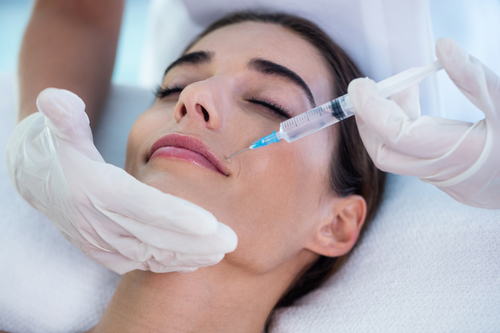
When you first dive into cosmetic injections, the waters can seem a bit treacherous. Which injection is the right one – and how do you even know what to expect? Wrinkle injections are simpler than fillers, if only because the playing field is a bit less crowded. But when it comes down to Botox vs. Dysport, it can be tricky to understand the benefit of one over another.
The best rule of thumb is to check with a professional before you set your heart on one or the other. An experienced provider will make the recommendation that best fits your facial lines, budget and treatment goals. But it never hurts to do some research before your consultation – and we have some up-to-date information on the Botox vs. Dysport battle before.
Is one injection better than the other?
Determining exactly how the two wrinkle-reducer options differ is not fully understood, and in many cases, it comes down to the patient and the desired results they are looking for in determining which injection is best for their specific needs.
So really, the question to ask is, which injection is best for me and my wrinkles, and not which is best in general.
How Botox and Dysport are Similar
Both Botox and Dysport effectively treat fine lines and wrinkles by relaxing muscle tissue to the point where they prevent the muscle from contracting – thus, creating a wrinkled appearance. When either product is injected into a targeted muscle area, the relaxation of the muscles reduces the appearance of wrinkles in the area.
Both Botox and Dysport will give you a temporary result, with regular treatment sessions approximately every 3-6 months.
Major Differences in Wrinkle Injections
The main differences in these two products comes down to varying formulas. Both are thought to work in the same way, by blocking nerve signals to the muscles, with the main differences being:
Dysport
Diluted differently than Botox, Dysport may be more effective at reducing crow’s feet wrinkles than Botox because the formula contains smaller molecules compared to Botox, which may be beneficial. Smaller molecules enable Dysport to work faster than Botox and diffuses more than Botox, causing it to spread to a broader area after it has been injected – meaning a larger treatment area can be addressed in fewer injections. Dyson may act quicker than Botox, often working within one or two days before wrinkles begin to fade after receiving treatments.
Dysport may be more likely to cause antibody formation, potentially preventing it from working if your body reacts to the toxins.
Botox
The Botox formula is more concentrated than Dysport, making it more effective in treating larger areas, or areas with thicker muscles. Botox is by far more commonly used than Dysport, while each product is equally effective when used on wrinkles between the eyebrows. Botox typically takes between three to five days to see results.
Which is right for me, Botox or Dysport?
Botox and Dysport are so similar that they’re often looked as parallel options in eliminating fine lines and wrinkles. Like Botox, Dysport is an injectable form of botulinum toxin Type A, and works by injecting small amounts of the toxin into specific wrinkle-causing muscles, paralysing them.
The main key factor when people are deciding between Dysport vs Botox is the cost. The cost of Dysport compared to Botox is approximately ⅓ of the cost of Botox; However, Dysport is also ⅓ the strength of Botox. This often means that a patient will need approximately three times as many units of Dysport to get the same results as you would with one unit of Botox, bringing the two treatment costs to be about the same in the end.
Interested in finding out whether Dysport or Botox is best for you and your specific wrinkle-reducing needs? Schedule a consultation with Radiance Skincare & Laser Medspa and let us help you determine which treatment option is right for you.

